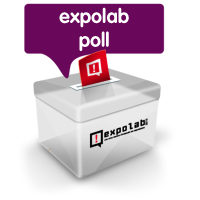On April 22nd, Irene Lapuente, Ramon Sangüesa from the Expolab team at Citilab and Enric Senabre (coordinator of Urbalanbs at Citilab) facilitate the first of a series of four workshops on practices 2.0 in cultural institutions. This first workshop took place at CCCB, Barcelona Center for Contemporary Culture.
In six very intense hours, communication, media, and museum professionals, got a hint of what it takes to develop a full-fledged 2.0 participatory project. First, they were asked to imagine and prototype projects in a very short time. All of them had to include a greater or lesser degree of participation.
In general, the prototypes showed concern about participatory relationships with users. Most of these users were “artists”, although some participants in the workshop also opened participation to plain citizens.
Once the project prototypes were built using cardboard, plasticine, sticks and stickers, participants were divided into groups taking the roles of users or, alternatively, presenters of their projects. That gave people a taste of what it takes to be on the user’s shoes and to understand what they really want and what is their view when they are invited to participate.
The afternoon brought in more reflections about the projects: What was the best thing that could happen to a project? And what was the worst? How the worst scenario could be avoided and what other steps should be followed?
Finally a strong point was made by asking directly why people wanted to include participation in their projects? Which were their objectives as an institution and how it was going to get any benefit from a participatory approach? All these questions led to a strongdebate … that had to end for the time being at CCCB. However, it will continue online at the working group formed by all the people that took part in the four workshops of the series aobut 2.0 practices in cultural institutions.
Here are the project proposals that emerged during the first workshop:
EmoLab
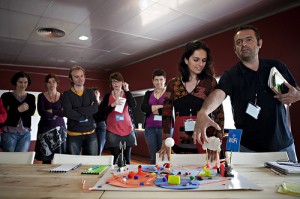 An exhibition centre for emotions aimed at every type of public.
An exhibition centre for emotions aimed at every type of public.- Focussing around the channeling of emotions, with entry devices such as videoanimation to record users.
- Importance of the “hook” and how to get people into the centre.
- Containing both a virtual part or “cloud” in order to generate content and the level of committment from the participants in the project.
- It would evoke through experiences, regardless of classic artistic classifications (theatre, dance, painting, etc).
- Online socializing would be strengthened thanks to “digitalization” of the examples of emotions.
- Possibility to trnsfer it to other areas and spaces, peripatehtically, strengthening the experience of attendance.
Public project for consuming and co-creating art
 A physical space for creators to launch their own works to the public.
A physical space for creators to launch their own works to the public.- Conceived as a public space, not just an installation.
- However, it would be a physical reference and workspace.
- Importance of the stewardship: the proposal would include a cultural administrator acting as a facilitator.
- Criteria for selecting works: committees would also integrate the users, the public.
- The programmer/director should act more as a mediator than as a director.
- It would reposition the institution, which as an added value would seek to involve the user.
- It would strengthen collective art projects, making them known to a wider public from the same single platform.
- Thanks to activating a critical mass of users / decision-makers the quality and interest of the projet and works wil be made credible.
- It is a type of cultural centre operating “à la carte”, which has presence on the streets and adjacent spaces.
The voice from the square
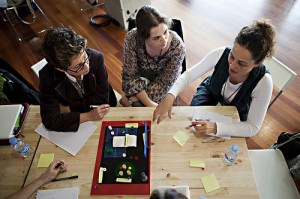 Peripathetic project of cultural heritage aimed at different audiences and ages.
Peripathetic project of cultural heritage aimed at different audiences and ages.- Starting with a type of empty bucket into which participants can add content.
- A series of “mailboxes” will collect and digitalize experiencies around the public space of the participants.
- Examples are compiled around local heritage and identity (photos, voice, video, text).
- It even integrates conflict showing it as a living-dialogue between the exhibition and the public.
- The content is accessible via specific digital tables, from where it can be remixed.
- As the exhibition travels around it accumulates material and invites a reaction to it.
- It incorporates a physical outside meeting-space for participants.
- The exhibition should reach local collectives before it “disembarks”.
- Later on it promotes and reflects everything on-line, including an ethnographic study about the information compiled.
Community of social projects
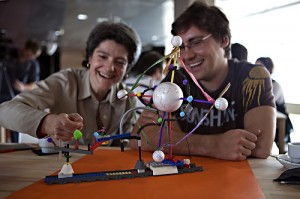 An area for dropping in and exchange for experts and all those interested in different environments.
An area for dropping in and exchange for experts and all those interested in different environments.- It can range from rural museums, to photo exhibitions, from NGO’s to journalist groups (professionals and citizens).
- A metacommunity for projects, to share motivation, resources, common aims, etc.
- It fosters voluntary applications around the projects under development.
- It create a working social network of people and ideas, for remixing (for example journalism and catalan literature).
- It would integrate initially content from experts in other networks and prestigious places, as motors for each group.
Cultural Laboratory online
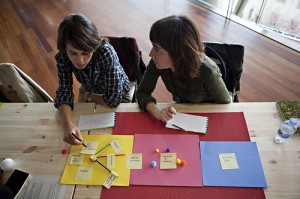 An online network of users who mutually help themselves to create works.
An online network of users who mutually help themselves to create works.- Moderated and fllowed closely by a curator.
- it is a platform for artists, and users are able to contribute or act as observers.
- It is a living organism regardless of time-limitations that are typical for exhibitions.
- The virtual platform would incorporate tools for decision making.
Hybrid Platform for artistic production
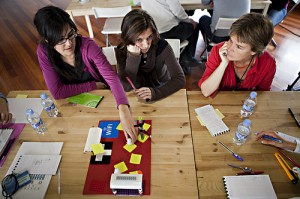 A physical space serving as a node for centres of artistic production.
A physical space serving as a node for centres of artistic production.- A virtual space as an idea factory for different agents.
- It aims at strengthening dynamics and interaction of different profiles.
- Dilemma on whether to create a brand new online platform vs. appropiating already existing ones
- Aiming to put the final user in contact with the creatives.
If you want to see more photos from this event, you will find them in Flickr!
All photos copyright CCCB / Carlos Cazurro
